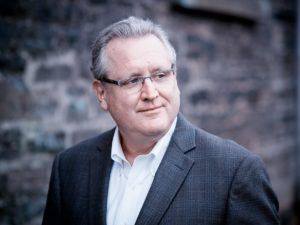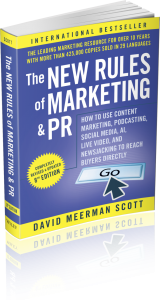
by Braden Kelley
Recently I had the opportunity to interview Whynde Kuehn, author of the new book Strategy to Reality.
Whynde Kuehn is the Founder and Managing Director of S2E Transformation. Whynde is a recognized global thought leader and a long-time pioneer, practitioner and educator in digital transformation, strategy execution and business architecture, a foundational discipline for enabling end-to-end transformation and organizational agility. She regularly speaks, writes and chairs/co-chairs events with a mission to advance best practices and facilitate community and advocacy across the globe. Whynde is Co-Founder, Vice President, and Academic Committee Chair of the Business Architecture Guild®, a not-for-profit organization focused on the advancement of the business architecture discipline.
The interview dives into how to move big ideas into action, along with exploring several business architecture, strategy and digital transformation topics.
Without further ado, here is the transcript of that interview:
1. What is the difference between an enterprise architect and a business architect?
We can generally think of enterprise architects as professionals who facilitate the development and usage of enterprise architecture to enable effective strategy execution, decision-making, and macro-level design for their organization and the ecosystem in which it operates.
For reference, the Federation of Enterprise Architecture Professional Organizations (FEAPO) characterizes enterprise architecture as “a well-defined practice for conducting enterprise analysis, design, planning, and implementation, using a holistic approach at all times, for the successful development and execution of strategy. Enterprise architecture applies architecture principles and practices to guide organizations through the business, information, process, and technology changes necessary to execute their strategies. These practices utilize the various aspects of an enterprise to identify, motivate, and achieve these changes.”
Enterprise architecture is comprised of multiple architecture domains, which we can think of as business architecture + IT architecture, where IT architecture includes application architecture, data architecture, and technical architecture. In practice, some organizations structure with architects practicing within each architecture domain specialty who collaborate with each other (with no overall enterprise architect role) while other organizations have both an overall enterprise architect role in addition to the specialized architect roles. In the latter case, while an enterprise architect focuses across all architecture domains, they often tend to be T-shaped or V-shaped where they are deeper in one specialty over another.
So, what is the difference between an enterprise architect and a business architect? The answer is somewhat dependent on the context of an organization’s structure and practice, but generally speaking, an enterprise architect practices across all architecture domains, where a business architect focuses just on the business architecture domain (and partners with other architects). Additionally, here are a few important things to keep in mind:
- All architects should share a base set of competencies as well as those specific to their area of specialization
- All architects should be fluent in their organization’s business architecture
- Close partnership and integration across all architecture domains and architect roles is critical for success, this includes cohesiveness of the architecture knowledgebase as well as how architects work together (and with other roles) to deliver value to the organization
- To maximize value, the business architect role should be business-focused and strategically positioned
- Business architects can focus on different scopes, from the full enterprise to a set of capabilities to a specific business domain; they always consider the bigger picture though regardless of scope
2. Why do organizations need business architects?
We know that organizations are going through a time of tremendous transformation, and that change and disruption are part of our new normal. A business architecture is most useful in the context of change, which is why we have seen an increase in adoption of the discipline worldwide. Business architects help organizations to create a clear and shared macro level understanding of where the organization is today, where it is going in the future, and how it will get there.
Business architects play a unique (and often missing) role to help inform and translate strategy into the cohesive set of changes needed across people, process, and technology to make that direction real (using value streams and capabilities as a key means to organize changes). They also help to ensure alignment across an organization. This includes both ensuring that the initiatives and solutions delivered meet the original business and architectural direction as well as ensuring that investments in capabilities (implemented through people, process, and technology) are appropriately harmonized across business units, products, and geographies.
Beyond their unique role in helping to inform, translate, and align strategy to execution, business architects also help to steward their organization’s business architecture knowledgebase. A business architecture is like a blueprint that provides a shared language and mental model for an entire organization, and it is owned by the business. A business architecture can and should be used by anyone in an organization for decision-making and an important part of the business architect role is to support others in doing so.
The diagram below reflects the contemporary practice of business architecture as context for questions 1 and 2. Business architecture lives in two worlds, first as part of the enterprise architecture umbrella (right) but also as a key contributor in a strategic management context (left).

3. What does it take to be a good business architect?
There are a few characteristics that encapsulate how good business architects think and act. For example, they are value-driven and focus on business value, outcomes, and results for their organization and its customers or constituents. Business architects are business-minded with a strong command of how business works, how to evolve business models and formulate strategies to win, and how to design an organization for effectiveness and agility (this includes having a command of technology and how to leverage it strategically). They are enterprise advocates, always bringing people together across organizational silos and back to the bigger picture of the enterprise. Business architects are bridge builders, knowing that it takes an ecosystem of teams to translate strategy into action and run an organization successfully. While business architects perform unique responsibilities, they also build close partnerships with others because they realize their own success – and the success of the organization – depends on making other people successful. Business architects are also visualizers and storytellers to create clarity and common understanding and they serve as change agents for new ideas. Business architects help to simplify, visualize, and explain complex concepts and show new connections.
Beyond these characteristics, a great business architect needs a depth of knowledge and experience including building a business architecture baseline (capabilities, information concepts, and value streams) at the enterprise level architecting change initiatives, and working across the life cycle from strategy to execution.
Becoming a great business architect is a journey that takes time, but a very rewarding one along the way. A truly successful business architect majors in business architecture, but minors in other disciplines and frameworks. The most adept business architects think strategically and architecturally to facilitate strategy execution and solve complex problems, leveraging business architecture as the foundation, blended seamlessly with many other approaches and abilities. This means that great business architects continually develop and leverage a wide range of knowledge and experiences – much of it beyond the realm of business architecture.
4. What are the key components of a business architecture?
 The foundation of a business architecture is comprised of capabilities (i.e., the reusable building blocks that describe what an organization does to deliver its products and services and support its operations), value streams (i.e., the high-level flows that deliver value to an external or internal stakeholder), and a cross-mapping between them (to depict where reusable capabilities are leveraged to deliver business value). In addition, a set of information concepts underpin the capabilities and value streams – and the entire business and IT architecture – and give people a truly shared definition of key terms such as customers, partners, products, assets, and so forth.
The foundation of a business architecture is comprised of capabilities (i.e., the reusable building blocks that describe what an organization does to deliver its products and services and support its operations), value streams (i.e., the high-level flows that deliver value to an external or internal stakeholder), and a cross-mapping between them (to depict where reusable capabilities are leveraged to deliver business value). In addition, a set of information concepts underpin the capabilities and value streams – and the entire business and IT architecture – and give people a truly shared definition of key terms such as customers, partners, products, assets, and so forth.
In addition to these three fundamental business architecture domains, there are seven additional business domains that are represented through an organization’s business architecture including business units (internal business units and external partners), products (the goods and/or services an organization offers to its customers/constituents), policies (external regulations and internal polices), stakeholders, strategies, metrics, and initiatives.
In addition, business architecture connects to the domains within other disciplines as well such as to journeys from the customer experience discipline, processes from the business process management discipline, requirements from the business analysis discipline, and applications and software services in the application architecture.
A business architecture is essentially an interconnected and multidimensional set of views, stored in a reusable knowledgebase, that can be used to inform many different business scenarios.
5. Who are the key stakeholders for a business architecture?
While the overall value proposition for business architecture is to enable effective strategy execution, business architecture is a bit like a Swiss army knife in that it can be used for a broad range of business usage scenarios and decision-making.
As a result, each organization needs to define its goals for leveraging the discipline for value. For example, while many organizations leverage business architecture for informing, translating, and aligning strategies and transformations, other organizations focus on leveraging the discipline for macro level simplification and effectiveness, business and IT alignment, or even a repeatable way to approach acquisitions.
As a result, the key stakeholders for business architecture within an organization can vary based on how the discipline is being used. However, some of the most common stakeholders for business architecture include strategy and transformation leaders and their teams along with portfolio managers, strategic planners, and technology leaders from CIOs and CTOs and down. Other key stakeholders include C-level business leaders, business unit leaders, product leaders, innovation leaders, risk managers, compliance managers, program and project managers, data management leaders, human-centered designers, organization designers, organizational change managers, business process professionals, business relationship managers, business analysts, IT architects, and many more.
6. How does one “use” a business architecture?
Generally, there are three categories of usage for a business architecture: to (1) facilitate effective strategy execution as mentioned earlier, to (2) help organizations design or redesign for effectiveness and agility, and to (3) inform a wide variety of business and technology decision-making scenarios.
For organization design and redesign, consider that we can assemble capabilities in different ways to deliver new value, products, and services. We can also design our organizations with increased efficiency, for example, by reducing the number of systems needed to automate the same capability.
For decision-making, consider that a business architecture knowledgebase is the go-to place for information about an organization at a macro level. As a result, we can get holistic answers framed in a shared business context to support decision-making around strategic alignment, customer experience, product management, investments, cost, risk, compliance, outsourcing, business and IT alignment, application portfolio management, technical debt, cloud strategy and migration, sustainability, mergers and acquisitions, divestitures, joint ventures, and more.
7. Why is it so challenging for organizations to move big ideas into action?
Organizations may formulate excellent strategies, but the challenge often occurs in the translation of those ideas across a large organization with many business units, products, and regions. I believe there are a few foundational challenges that contribute to this.
First, organizations do not always have a formalized, cohesive approach to strategy execution that knits together all the teams from end-to-end to develop strategies, architect changes, plan initiatives, execute solutions, and measure success. We may do this for parts of the process, but we do not necessarily look at the whole of strategy execution with the same criticality and accountability as we do with other functions such as sales, marketing, or finance.
Second, large organizations are still siloed in many ways, which shapes the behavior, thinking, and priorities of individuals. For example, when it comes to investments or problem solving, we may default to what is best for our business area versus thinking about what is best for the customer and the enterprise – especially when organizational structures, motivation mechanisms, and inertia enforce the status quo.
Finally, I believe that both of these challenges are also underpinned by a need to enhance business education to teach a more comprehensive approach from strategy to execution, and normalize the idea of business and IT architecture to supplement strategic thinking and decision making.
8. Digital transformation has become an overused phrase. What is a true digital transformation?
 A true digital transformation is strategic and customer-driven, leveraging technology to establish business models and ecosystems that unlock new value for organizations to thrive in the digital economy. In other words, automation alone does not constitute a digital transformation. The Institute for Digital Transformation gives us clear guidance in the Digital Transformation Manifesto – that it should “lead to metamorphic change among an organization’s products, services, systems, operations, and culture – amplified by technology.”
A true digital transformation is strategic and customer-driven, leveraging technology to establish business models and ecosystems that unlock new value for organizations to thrive in the digital economy. In other words, automation alone does not constitute a digital transformation. The Institute for Digital Transformation gives us clear guidance in the Digital Transformation Manifesto – that it should “lead to metamorphic change among an organization’s products, services, systems, operations, and culture – amplified by technology.”
I believe that collectively many organizations are now coming to terms with what digital transformation really means and are starting to move beyond the hype. I also think we are reaching the point where digital business is now just regular business – where digital is no longer something separate, but just part of how an organization delivers value, strategizes, and operates.
9. Where does a successful transformation begin?
A successful transformation starts with why. What does the business want to achieve and how will we know when we have achieved it? Clear business direction and outcomes provide the critical starting point so that people across an organization can accurately determine the change that is needed, both to people, processes, technology, assets, and locations – as well as the human side of change. Clear business direction also helps to inspire people to action on a collective vision that is greater than themselves.
10. Why do so many organizations fail to succeed at both strategy and execution?
Organizations can be challenged in formulating strategy, in ultimately executing upon a strategy, or both as suggested here. From a strategy formulation perspective, much has been written by strategy experts, but from my perspective, I see organizations challenged in a few key ways. For example, some organizations lack rigor in the definition of strategy itself, where the strategy does not reflect specific choices or specifies broad (and non-strategic) goals such as to improve operational effectiveness. I also see challenges with articulating strategy where different parts of an organization describe and decompose the strategy in different ways, making goals, objectives, and courses of action difficult to understand and reconcile from an enterprise perspective. Additionally, I see challenges with communicating strategy as it filters through the layers of an organization and becomes diffused – especially without a shared understanding of the courses of action and collective changes that help people relate to the direction and what it means for them.
From a strategy execution perspective, as shared in question #7, the challenges with execution (e.g., building solutions that do not meet business needs or are duplicative) often begin upstream without a well-defined translation through a common blueprint like an organization’s business architecture. This does not mean that improvements are not necessary to execution (and many shifts are happening worldwide today such as around agile delivery), but an organization should assess each major activity from strategy to execution both individually and together as a cohesive end-to-end process.
Achieving a strategy requires clear intent translated into organized effort and the structured methods from strategy management frameworks as well as business architecture and other design disciplines can help. Hopefully the increasing awareness of the opportunity – and necessity – for effective end-to-end strategy execution will inspire and enable organizations to take further action to prepare for an increasingly disruptive and exciting business landscape for years to come.
Conclusion
Thanks to you Whynde for sharing your insights with our global human-centered change and innovation community!
To learn more about Whynde’s views on making your strategy a reality, grab yourself a copy of her new book Strategy to Reality.
Image credits: Whynde Kuehn, Unsplash

 Sign up here to get Human-Centered Change & Innovation Weekly delivered to your inbox every week.
Sign up here to get Human-Centered Change & Innovation Weekly delivered to your inbox every week.

![]() Sign up here to join 17,000+ leaders getting Human-Centered Change & Innovation Weekly delivered to their inbox every week.
Sign up here to join 17,000+ leaders getting Human-Centered Change & Innovation Weekly delivered to their inbox every week.


 Conventional marketing wisdom says that communities are a great way to connect with your target audience in an engaging and meaningful way. Typical justifications for building communities include:
Conventional marketing wisdom says that communities are a great way to connect with your target audience in an engaging and meaningful way. Typical justifications for building communities include:




 The foundation of a business architecture is comprised of capabilities (i.e., the reusable building blocks that describe what an organization does to deliver its products and services and support its operations), value streams (i.e., the high-level flows that deliver value to an external or internal stakeholder), and a cross-mapping between them (to depict where reusable capabilities are leveraged to deliver business value). In addition, a set of information concepts underpin the capabilities and value streams – and the entire business and IT architecture – and give people a truly shared definition of key terms such as customers, partners, products, assets, and so forth.
The foundation of a business architecture is comprised of capabilities (i.e., the reusable building blocks that describe what an organization does to deliver its products and services and support its operations), value streams (i.e., the high-level flows that deliver value to an external or internal stakeholder), and a cross-mapping between them (to depict where reusable capabilities are leveraged to deliver business value). In addition, a set of information concepts underpin the capabilities and value streams – and the entire business and IT architecture – and give people a truly shared definition of key terms such as customers, partners, products, assets, and so forth. A true digital transformation is strategic and customer-driven, leveraging technology to establish business models and ecosystems that unlock new value for organizations to thrive in the digital economy. In other words, automation alone does not constitute a digital transformation. The Institute for Digital Transformation gives us clear guidance in the Digital Transformation Manifesto – that it should “lead to metamorphic change among an organization’s products, services, systems, operations, and culture – amplified by technology.”
A true digital transformation is strategic and customer-driven, leveraging technology to establish business models and ecosystems that unlock new value for organizations to thrive in the digital economy. In other words, automation alone does not constitute a digital transformation. The Institute for Digital Transformation gives us clear guidance in the Digital Transformation Manifesto – that it should “lead to metamorphic change among an organization’s products, services, systems, operations, and culture – amplified by technology.”  Recently on Episode #873 of the Marketer of the Day podcast, I had the opportunity to sit down with Robert Plank, have a great conversation, and chat about a number of different topics. Here is a quick excerpt:
Recently on Episode #873 of the Marketer of the Day podcast, I had the opportunity to sit down with Robert Plank, have a great conversation, and chat about a number of different topics. Here is a quick excerpt:


